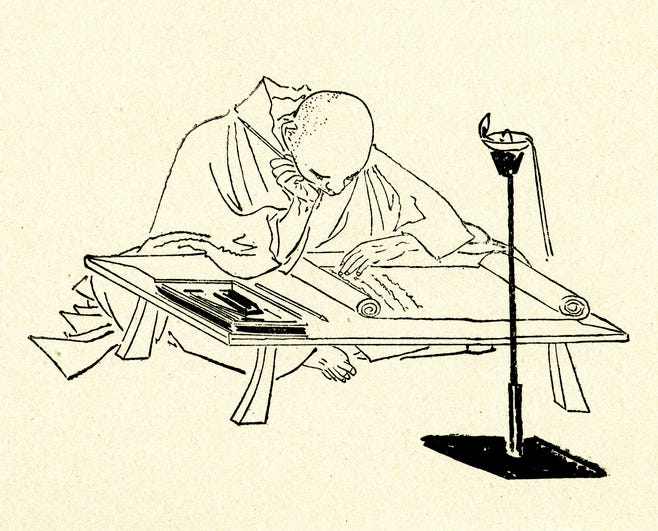The Rediscovery of Radical Attention in Modern Life
Written on
Chapter 1: Understanding Attention
In today’s fast-paced environment, the ability to focus has dwindled significantly. Research indicates that our attention span has shrunk from two and a half minutes to a mere 40 seconds in just over a decade. With an overwhelming amount of advertisements, apps, and quick content vying for our attention, it’s no wonder that we struggle to concentrate. A recent observation at our pediatrician’s office illustrated this: each segment of the children’s program on the TV screen lasted only three seconds.
To navigate this barrage of stimuli, we must learn to enhance our attention skills. While the idea of escaping to a quiet retreat may be appealing, most of us need to cultivate our ability to focus amid the chaos. This involves more than simply directing our attention to tasks; it requires a profound capacity to set aside our self-interests and fully engage with what is in front of us.
The contemporary terms “mindfulness” and “being present” hold value, yet they often carry varied meanings. Instead, I advocate for the term “radical attention.”
Section 1.1: Defining Radical Attention
So, what exactly is radical attention? To shed light on this concept, I will reference two influential thinkers of the 20th century: Simone Weil and Iris Murdoch.
Radical attention can be described as a form of negative effort. Simone Weil, a philosopher dedicated to activism and spirituality, presents a compelling viewpoint in her essay "The Right Use of School Studies." She posits that engaging fully in subjects like language or geometry can enhance one’s capacity for prayer, as it compels us to concentrate beyond ourselves.
She argues that the quality of our performance is secondary; the goal is to master the skill of attention. Weil describes it as “suspending our thought, leaving it detached, empty, and ready to absorb the object.”
When I lived in South Korea, I worked long hours at an English academy. In the evenings, I dedicated myself to learning Korean, immersing in children’s books and basic conversations. This process was challenging yet fulfilling, as I became wholly engrossed in the task at hand.
Weil refers to this focus as “negative effort”:
“Attention is an effort, the greatest of all efforts perhaps, but it is a negative effort. Of itself, it does not involve tiredness.”
As I navigated the complexities of the Korean language, I learned to recognize when I needed a break. Just like any worthwhile endeavor, when we encounter difficulty, it’s crucial to pause and return with renewed focus.

Section 1.2: The Power of Focus
For those who may not seek a connection to a higher power, the act of giving attention can be directed towards reality and the people around us. Focusing our thoughts on something valuable allows us to push aside distractions and self-doubt, leading to greater happiness and personal growth.
Iris Murdoch, a British-Irish novelist and philosopher, echoed Weil’s sentiments about attention. She believed that true attention leads to a deeper understanding of reality. When we fully engage in activities like learning a new language, we create space for genuine connection, free from the clutter of our egos.
Murdoch articulates:
“The love which brings the right answer is an exercise of justice and realism and really looking.”
When we immerse ourselves in an experience, we set aside worries about the future or past. This state of focus, often referred to as “flow,” transcends mere productivity.

Chapter 2: Cultivating Attention in Relationships
To build meaningful relationships, we must cultivate the art of attention. Erich Fromm, a prominent psychoanalyst, contrasts the concepts of “narcissism” and “objectivity.”
Narcissism, he explains, limits our perception to what exists within ourselves, while objectivity allows us to appreciate others as they truly are. If we remain ensnared by our assumptions and insecurities, we hinder our ability to nurture healthy connections.
This is where the practice of radical attention becomes essential. It’s not merely a fleeting skill; it requires ongoing effort and commitment. The most impactful moments for practicing attention often arise in our daily interactions, not in solitude.
Remember, developing this skill is a gradual process. Embrace the notion that attention is a negative effort. When you feel overwhelmed, take a moment to step back. The key is to remain patient and consistent; small improvements accumulate over time.
As Weil wisely noted:
“We do not obtain the most precious gifts by going in search of them but by waiting for them.”
In this enlightening video, Jack Kornfield discusses the significance of paying attention and how it relates to our inner wisdom.
This tutorial dives into the fundamentals of attention through art, illustrating how focus enhances creativity and skill development.